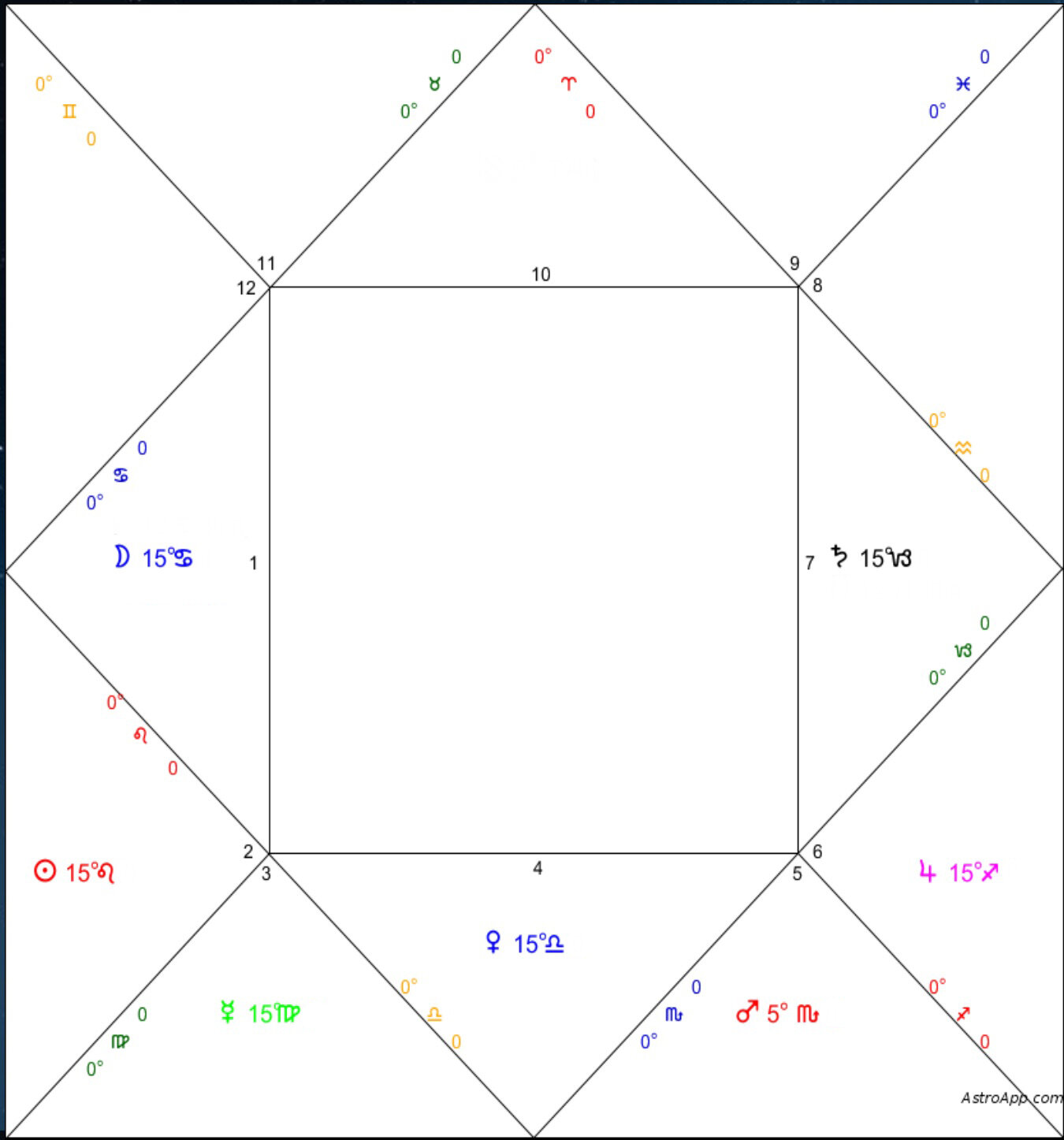For my first blog post, I thought I’d write about a subject that is sometimes taken for granted: sign rulerships. There is a marked difference in the logic between pre-modern astrology and modern astrology as to why a planet rules a sign. By the 20th century, this difference became more marked.
First of all, what does this mean? Each of the 12 zodiac signs is governed by a planet. At its simplest, this planet will act as a significator, or actor for the sign. For instance, if someone’s career (10th house) is in Aries, then one can look to Mars, the ruler of Aries, as the primary planet that speaks about career.
Starting in the 20th century, an increasingly popular way of interpreting signs started to surface: sign=ruler=house. For example, Aries is like Mars is like the first house (since Aries is the first sign). This has resulted in confusion.
First a little bit of background.
Ancient History
The Thema Mundi
Early astrological books described sign rulerships slightly differently, and most importantly, they described why a planet rules a sign in clear language. In Firmicus Maternus’ 4th century Matheseos, book 3, sections 9-10, he describes the Thema Mundi.
The Thema Mundi is a theoretical chart for the beginning of the universe. It was most likely used as a teaching device. This particular chart describes several basic astrological concepts, including sign rulership.
In this chart, Cancer rises. Each of the seven planets is placed in their ruling signs in the bottom half of the chart at 15 degrees each.
We can see a specific pattern here.
Planets and aspects are divided into two categories: malefic. Things that benefic are considered conducive to bringing life and happiness and malefic are antithetical to life and happiness. I will categorize these below.
Jupiter Greater benefic Trine aspect
Venus Lesser benefic Sextile aspect
Mars Lesser malefic Square aspect
Saturn Greater malefic Opposition aspect
Mercury Either malefic or benefic Conjunction
The Sun and Moon are not part of this, but traditionally can also be benefic or malefic.
The Thema Mundi shows us this same pattern through sign relationships.
Cancer and Leo are the “pivot” of the chart. Cancer aspects planets on the upper half of the chart, and Leo aspects the lower half.
Keeping this in mind, we will see a similar arrangement in the list above:
Cancer and Leo aspect Sagittarius and Pisces by trine.
Cancer and Leo aspect Taurus and Libra by sextile.
Cancer and Leo aspect Aries and Scorpio by square.
Cancer and Leo aspect Capricorn and Aquarius by opposition.
Cancer and Leo are conjunct Virgo and Gemini.
Putting this together
This shows that originally sign rulership was related to an aspectual relationship to the signs of the Sun and Moon. The reason for this logic is that the Sun and Moon were considered the king and queen of heaven, and the planets acted as a sort of “court”. The signs were sometimes called “houses” which is not the same thing as topical houses. Seen in this way, the signs show two things: graphically illustrating the nature of the royal heavenly court, and showing what signs the planets are comfortable in.
The house analogy is a good one. It is not about affinity – i.e. Aries IS Mars, but rather Mars can be himself in Aries. This is contrasted with the modern approach where sign and planet and topical house become merged into a soup of meaning. This is how the confusion of Scorpio with 8th house meaning sex comes from – whereas the traditional view of the 8th is primarily death. Sex would be somewhere else – generally the 5th (though traditional natal techniques would be more complex than house rulership).
Traditional astrology keeps a clear division between the roles of planet, sign, and house. Signs by themselves do not say very much. However, a planet in a sign in a particular house can say a lot. Here is my simple analogy:
A planet is a character in a play.
The sign tells us how that character behaves.
The house tells us what the character is doing.
Aspects tell us how the character interacts with other characters.

